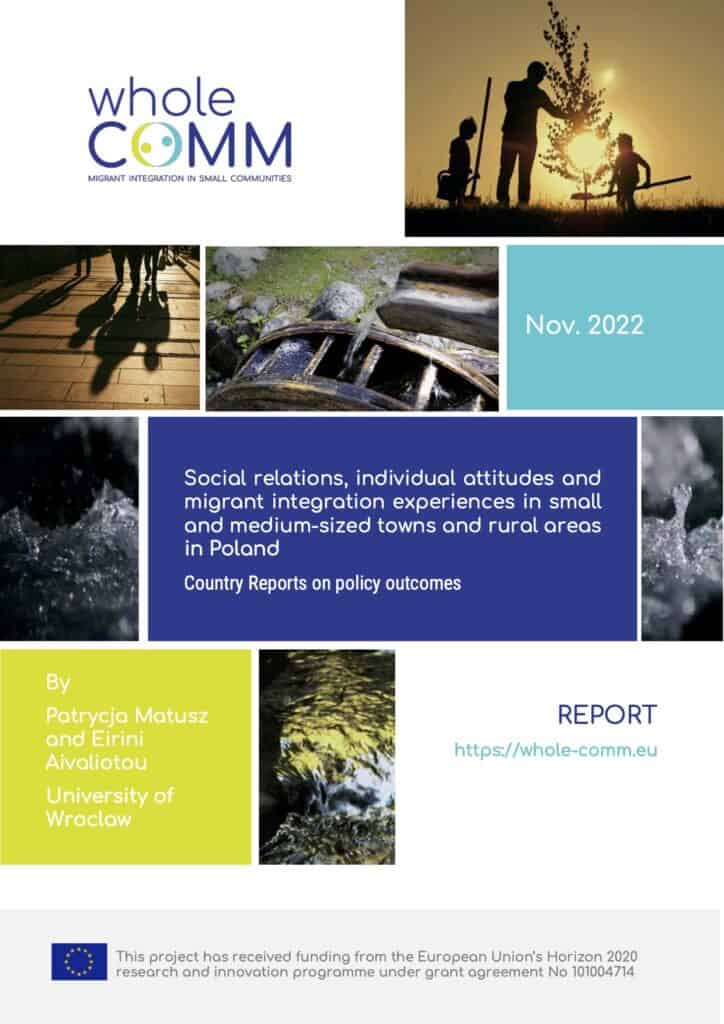The WP5 Polish report examines integration in four selected localities, two in Lower Silesia region and two in the Greater Poland region. For this research, focus groups with long-term residents and post-2014 migrants, interviews with migrants and participant observations were conducted. The objective of this comparative research is to analyze, post-2014 migrants’ experiences, individual attitudes, and social relations in the four different localities.
For the Polish case, migrants’ experiences varied between localities, based on three main factors; migrants’ economic and social status, knowing and being able to speak Polish, the size and location of the locality.
One of the localities is a rural area, which makes social relations rather sparse and exclusively for practical purposes as of finding shelter, job and daily shopping. Two localities are in close proximity with big urban agglomerations, which impacts inter-group relations, as migrants very often search for accommodation in these locations because the prices are more affordable and the housing market is more accessible than in large cities. Namely, a lot of them commute from peripheral small and medium-sized towns and rural areas (SMsTRAs) towards urban centres. Having in mind that migrants most of times work overtime that does not allow them to have extra time to socialize in the localities that they have accommodation in.
The European “refugee crisis” from 2015 did not have a large impact on Poland. The post-2015 migration inflows in Poland were mainly labour migrants from neighbouring countries. However, the first war in the Eastern part of Ukraine in 2014 might be seen as a push factor for Ukrainian migration to Poland. In a very short period of time Poland, became from an emigration country to a European leader in terms of newly issued resident permits. These migrants predominantly came from neighbouring countries and were occupied as temporary or circular migrants.
This has drastically changed after the war in Ukraine from 24th February 2022. This resulted in largest refugee outflow in Europe. In the first weeks almost 3 million of Ukrainians crossed the Polish borders. By the end of October 2022, the number of refugees who stayed in Poland is estimated to be 1,2 million (Duszczyk and Kaczmarczyk 2022).
Despite the high inflow of migrants in Poland in the recent years the national government has not developed a comprehensive migration and integration policy. The regulations related to migration are rather fragmented and integration activities are covered by local level institutions and NGOs. The implementation of the simplified procedure of employment of foreigners allows foreigners who are citizens of Belarus, Georgia, the Republic of Moldova, the Republic of Armenia and Ukraine to be employed in Poland for six months within 12 consecutive months (Department for Foreigners n.d.). This resulted in Poland being one of the most liberal regimes in terms of access to labour market. However, this did not trigger a set of policies for the integration of these newcomers.
Overall, the fieldwork conducted showed that local initiatives can influence migrants’ experiences, although, individual attitudes and social relations depend also on the dynamics of each community and the reasons of migration.
Authors: Patrycja Matusz and Eirini Aivaliotou



